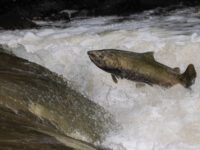Sonoma, first in the county to have a groundwater management plan, will see the plan put into action this month with the launching of a well monitoring program.
Then, on April 24, in an awards ceremony following a regular Basin Advisory Panel meeting, First District Supervisor Valerie Brown will honor panel members for their collaborative work in crafting the plan.
The monitoring system is an effort to collect data from wells, at different times of the year and at different locations, to determine water levels and ultimately water quality as well. They’ll be creating “multi nested wells,” where they can get data at several different depths, some looking at water quality and others looking at levels. “Most of the monitoring program is just water level monitoring,” said project manager Bill Keene with the Sonoma County Water Agency. “There’s some water quality being done. Mostly is the level. But we’re trying to look at some areas in the south to get information on saline intrusion.”
Public outreach is an important part of the program. “Getting people to know what we’re doing, getting people excited about what we’re doing. Looking at ways for us to improve the groundwater basin, instead of watching it sink. But to build it back up.” That is not an easy trick. “In the plan,” said Keene, “it was clear that we had to bring water into the basin if we wanted to stop the groundwater from going down. Either storm water, during flood time, or bringing down water from Russian River during the winter and inject that into the groundwater basin.”
They see the way to do that is through what they call, “conjunctive use,” to balance surface and groundwater use together, in balance. The information gathered from the monitoring system will help them know how to do that.
“We’re in a basin that has drawn down over the last 20 years,” said Keene. “Conservation will help. Use of recycled water will help.” There is no easy way to measure exactly how much conservation will save, gallon for gallon, but having a picture of current overall water use is a start.
“There’s nothing in the draft plan that would try to estimate the effect on groundwater of conservation,” said panel member Caitlin Cornwall, biologist and conservation planner for the Sonoma Ecology Center. “What is in the plan is to estimate actual current demand, which we really don’t know.” Infared technology is a way to see the extent and pattern of different kind of land uses, and from there they can estimate water consumption, but even that is not simple. “One of the most important basic facts in the Sonoma and Napa valleys is that the geology is very complex,” said Cornwall. “So it may be impossible to have a very good understanding of exactly where the water is and what it’s connected to. So we‘re operating in a lot of uncertainly. We don’t know where water moves, we don’t know where it recharges, we don’t know what our future climate is going to be exactly, and we don’t know how much water is going to be coming out of the Russian River in the future, so all that kind of uncertainty, we think augers for a relatively conservative approach to water, so at least we know how to not use so much. At least we have a plan in place.”
Cornwall called the plan a major accomplishment. “It’s sort of going into our water future with our eyes open,” she said. “I think we’re to be commended for it.”
Groundwater management plan goes into action
More from What's HappeningMore posts in What's Happening »
- Chinook Salmon Spotted in Valley Creeks
- Lighted Tractor Parade Set for November 30 on Sonoma Plaza
- Free Thanksgiving Dinner, 3pm at the Veterans Building
- Creative Sonoma Announces #TeachTheArts Campaign to Boost Local Teaching Workforce
- The Living Legacy of Mac McQuown
- “Community Call to Action Town Hall” Draws Concerned Residents






